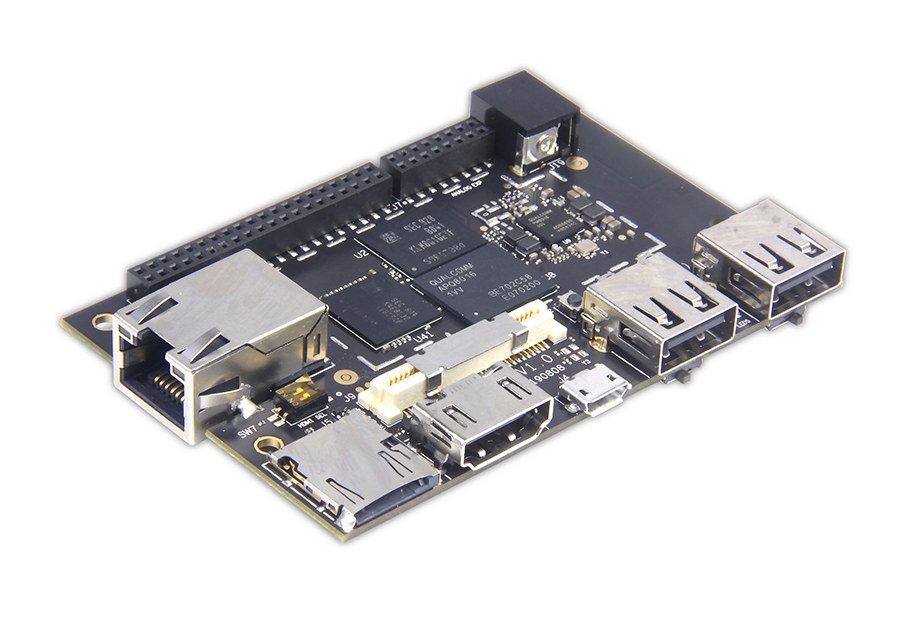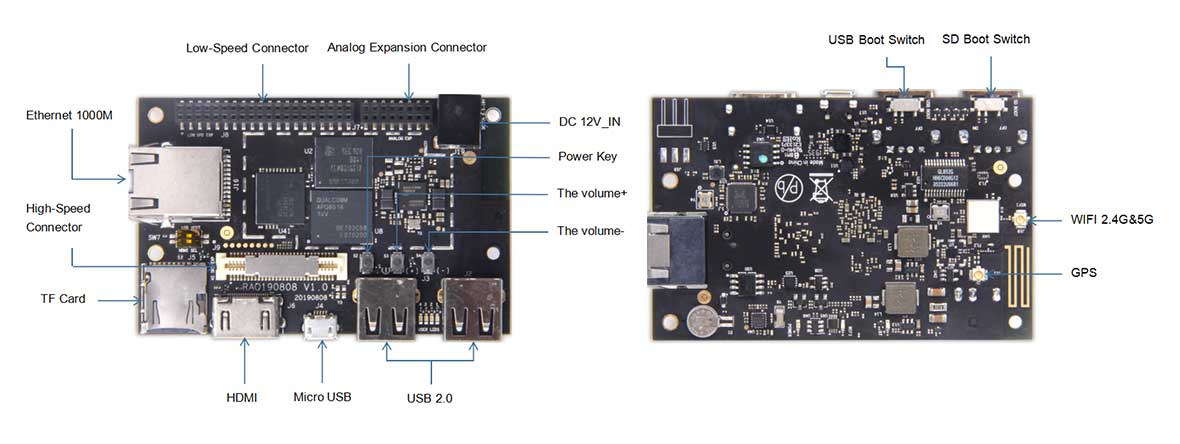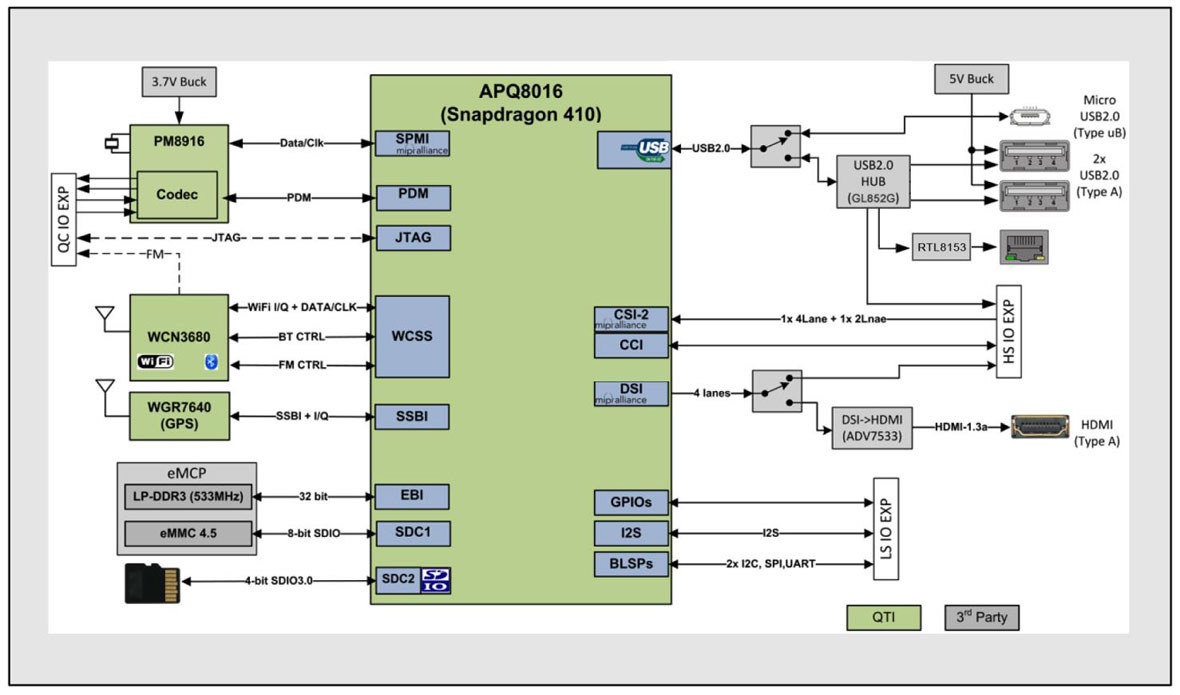The original 96Boards CE compliant Dragonboard 410c development board launched in 2015 was followed by Geniatech Developer Board IV the following with many of the same features plus the addition of a Fast Ethernet port and an RTC battery, and an 85x60mm form factor all of which made it non-compliant with the 96Board specs.
Geniatech has now introduced a new Developer Board 4 V3 version, that like the V2 model integrates a Gigabit Ethernet port and WiFi 5 connectivity, but the design has been modified get closer to 96Boards CE compliance with 85x54mm dimensions, and the same ports’ arrangement as on 96Boards CE boards, excluding the Ethernet RJ45 jack that is out of (96Boards CE) specs.

- SoC – Qualcomm Snapdragon 410E (APQ8016E) quad-core ARM Cortex A53 processor @ 1.2 GHz with Adreno 306 GPU
- System Memory – 1 or 2 GB LPDDR3 @ 533MHz
- Storage – 8 or 16 GB eMMC 5.0 flash + MicroSD 3.0 (UHS-I) slot
- Video Output – HDMI 1.3 up to 1080p @ 30 Hz, 4-lane MIPI-DSI up to 720p60 or 1080p30 for optional (touchscreen) display
- Connectivity – Gigabit Ethernet, dual-band 802.11 b/g/n/ac WiFi 5, Bluetooth 4.0, GPS; PCB antenna and u.FL antenna connectors
- USB – 2x USB 2.0 host ports, 1x micro USB OTG port
- Camera – 2x MIPI-CSI: 1x 4-lane, 1x 2-lane up to 13MP
- Expansion:
- 1x 40 pin low-speed expansion connector – UART, SPI, I2S, 2x I2C, 12x GPIO, DC power
- 1x 60 pin high-speed expansion connector – 4L-MIPI DSI, USB, 2x I2C, 2L+4LMIPI CSI
- Footprint for optional 16-pin analog expansion connector – Headset, Speaker, FM antenna
- Misc – Power, reset, and volume buttons. 7x LEDs (4x user, 1x Wifi, 1x Bluetooth, 1x Ethernet)
- Power Supply – +6.5 to 18+V DC input
- Dimensions – 85×54 mm (96Boards CE dimensions)
- Temperature Range – Operating: -25°C to +85°C

The new board still supports Android 6.0, Linux based on Debian, Windows 10 IoT core, and targets various embedded and IoT applications including robotics, cameras, set-top-boxes, wearables, medical devices, vending machines, building automation, industrial control, digital signage, casino gaming, etc…
Bear in mind that the board is not actually 96Boards CE compliant because the specifications do not include Ethernet for smaller form factors, but if you ever hoped for Ethernet on this type of board that’s the closest you’ll get to compliance. It’s basically a Dragonboard 410c board with Gigabit Ethernet and WiFi 5.

Geniatech Developer Board 4 V3 is now sold for $109 in 1GB/8GB RAM/storage configuration and $119 with 2GB/16GB. More details may be found on the product page.
Via LinuxGizmos

Jean-Luc started CNX Software in 2010 as a part-time endeavor, before quitting his job as a software engineering manager, and starting to write daily news, and reviews full time later in 2011.
Support CNX Software! Donate via cryptocurrencies, become a Patron on Patreon, or purchase goods on Amazon or Aliexpress




